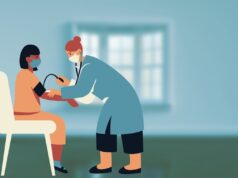
By Ryszard Piotrowicz
Thanks to progress, medicine is capable of saving lives. This nevertheless, paradoxically, generates an increasing number of patients with heart failure. Heart failure is a crucial problem in modern cardiology. Statistics show that more than 10 and 4 million people suffer from heart failure in Europe and in the USA, respectively. According to present guidelines for heart failure patients, regular exercise training has obtained the class of recommendation I, level of evidence A. The problem medicine needs to deal with is the provision of cardiac rehabilitation (CR) to all heart failure patients and thus complying with these guidelines.
Despite benefits, many HF patients are inactive. The lack of the acceptance of existing forms of the rehabilitation by patients and limitations resulting from the disease itself hinder the outpatient CR and therefore home telemonitored CR seems to be the optimal form of physical activity. Telemedicine can be most usefully in performing exercise training (ET) for two reasons: It can control the stability of clinical status, and help supervise training sessions. These goals can be achieved by monitoring the symptoms (fatigue, dyspnoea, pain) and parameters (heart rate, arrhythmias, ischaemia, blood pressure, body mass, medication taken etc) and thus ensure the safety of home tele-rehabilitation (TR).
Despite the fact that telemedicine is highly applicable and effective, there are very few papers dedicated to the study of TR in heart failure patients. Until recently only a couple of home rehabilitation monitoring models has been presented. From the simplest (1) heart rate monitoring (Smart N et al Am Heart J 2005) and (2) transtelephonic electrocardiografic monitoring (Kouidi E et al Cin Rehabil 2006), through the more advanced (3) tele-ECG-monitoring/guidance via a remote device (Piotrowicz E et al Eur J Heart Fail 2010) and (4) real-time electrocardiographic and voice transtelephonic monitoring (Squires RW et al Am J Cardiol 1991). It seems the last two are the most useful and reliable. The main difference between them is that the fourth involves real-time telemonitoring, whereas the third sends the ECG after each training session.
In the Institute of Cardiology Warsaw investigation based on the new model of home tele-rehabilitation in heart failure patients (Piotrowicz E et al. Eur J Heart Fail 2010), the remote exercise training device used enabled ECG recording and its transmission via a mobile phone to the monitoring centre in order to monitor the training in the place where the patient exercised. The device had training sessions individually preprogrammed for each patient (defined exercise duration, breaks, and timing of ECG recording). The device indicated the protocol with sound and light signals. The ECG recording was sent via mobile phone to the monitoring centre at the end of every training session or when patient felt it was necessary. The training workload could also be adjusted according to symptoms and ECG appropriately or, if necessary, discontinued.
The tele-rehabilitation procedure consisted of two steps: Getting the consent for training and the training session itself. Before each telemonitored exercise training session, patients answered some questions regarding their condition, including symptoms and signs of stability, blood pressure, weight and medications taken. Subsequently, patients transmitted their resting ECG data to the monitoring centre. If no contraindications were detected, then patients were given consent to start the training session. Patients performed the planned physical training and after each session they sent ECG to the monitoring centre where the effectiveness and safety of the training were assessed.
The goal of the study was the comparison between the two models of CR: The new model of home-based ECG monitored CR and the standard ambulatory-based CR. The results of this comparative study proved that the new model was equally effective as the standard one and provided a similar improvement in quality of life. Adherence to CR seems to be better for TR. TR may be a useful alternative form of CR in patients with HF (Piotrowicz E et al Eur J Heart Fail 2010).
Based on our experience the home-based telemonitored cardiac rehabilitation is highly applicable and beneficial for heart failure patients in everyday life. We concluded that in order to improve the applicability of telemedicine it is vital to create a platform for compatibility in terms of devices used.
Ryszard Piotrowicz is head of Department of Cardiac Rehabilitaion and Noninvasive Electrocardiology, National Institute of Cardiology, Warsaw, Poland.









